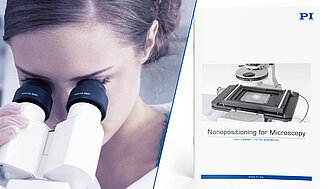Lightsheet microscopy (LSFM) is a powerful platform for in vivo imaging offering low phototoxicity and fast image acquisition. The Flamingo project from Professor Dr. Jan Huisken, Research Group Leader and Director of the Medical Engineering Department at Morgridge Institute for Research in Madison, WI, aims to make this technology easily available to researchers.
Learn moreTag: Ultrasonic Piezomotors
Flamingo Light Sheet Microscopes Rely on Drives from PI
Precise Sample Positioning is Crucial for Conclusive Images
Precision Positioning of Samples and Objectives
The Key to Successful Microscoping
· Markus Wiederspahn
Whether classical stereo microscopy, fluorescent, widefield or laser scanning microscopy, whether SEM, FIB-SEM, TEM, AFM or correlative microscopy - positioning samples and objectives with subnanometer precision is decisive for the quality of your results with all of these techniques. This fully clickable, new “Nanopositioning for Microscopy” brochure provides a comprehensive overview of objective scanners and sample stages with up to six degrees of motion freedom – illustrated by a variety of today’s microscopy techniques.
Learn moreSetting up and Adjusting a Fluorescent Microscope for Reliable Examination Results
PI Supports the GATTAscope Project
The GATTAscope uses the TIRFM process to capture meaningful images thanks to high-precision positioning of the sample with stages and controllers from PI - find out how in this article.
Learn more

